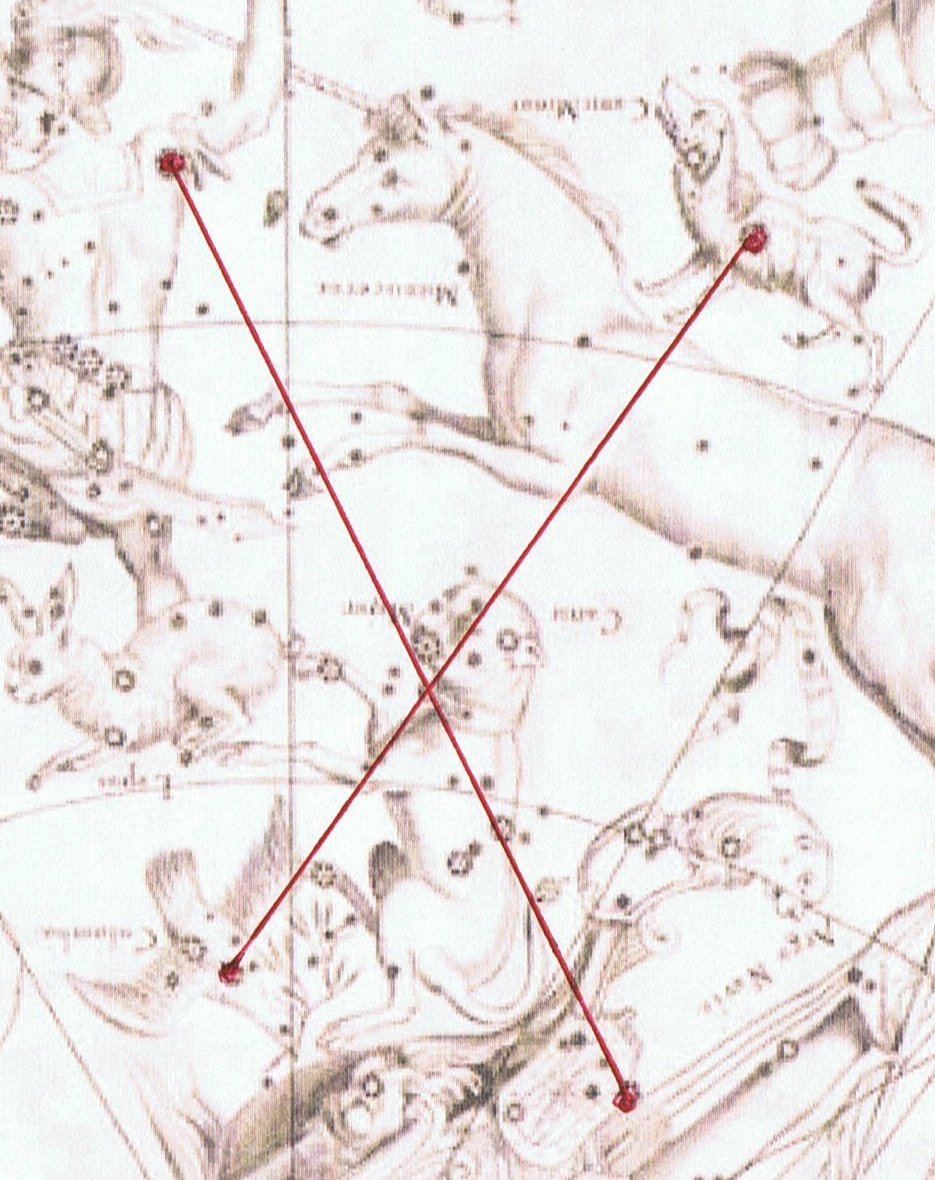Kepler clearly built on these ancient ideas when he created his famous cosmogram, with the cube of Saturn containing all the rest of the polyhedra: 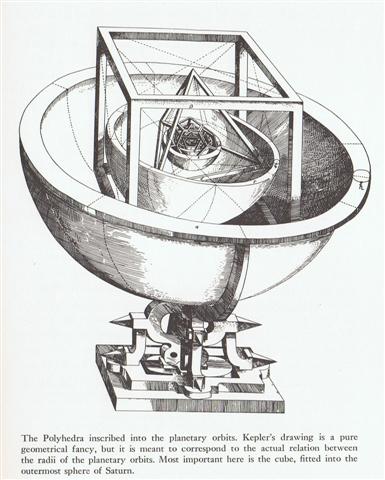 His model might have inspired the Polynesians to conceive an array of concentric sky shells surrounding their little lands - implying the polyhedra were not real but only there in order to serve as generators of distance: 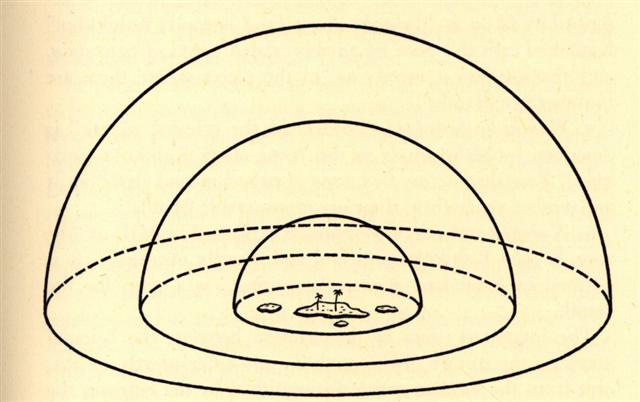 An ancient precursor to Kepler's cosmogram could have been an octahedron inscribed in a cube - together with its mirror opposite, a cube inside an octahedron:
It is well known that the pyramid of Khufu was measured out by its creators to be a representation (map) of the northern hemisphere and reasonably we should therefore understand his Khafre companion to be a mirror representation of the opposite - viz. of the southern hemisphere. They were approximately equal in size, but it was necessary to turn one of them upside down in order to have them side by side and make them easily recognizable as Twins.
... According to mythology, Alcyone and Celaeno were both seduced by Poseidon. Maia, the eldest and most beautiful of the sisters, was seduced by Zeus and gave birth to Hermes; she later became foster-mother to Arcas, son of Zeus and Callisto. Zeus also seduced two others of the Pleiades: Electra, who gave birth to Dardanus, the founder of Troy; and Taygete, who gave birth to Lacedaemon, founder of Sparta ... ... In Greek mythology, Eurotas ... was a king of Laconia, the son of Myles and grandson of Lelex, eponymous ancestor of the Leleges, the pre-Greek people residing, in the myth, in the Eurotas Valley. He had no male heir, but he did have a daughter, Sparta. Eurotas bequeathed the kingdom to her husband, Lacedaemon, the son of Taygete, after whom Mount Taygetus is named, and Zeus, according to Pausanias. Lacedaemon renamed the state after his wife ... ... Pausanias says: It was Eurotas who channelled away the marsh-water from the plains by cutting through to the sea, and when the land was drained he called the river which was left running there the Eurotas. The 'cutting through' is seen by Pausanias' translator and commentator, Peter Levy, S.J., as an explanation of Eurotas (or Vrodamas) Canyon, a ravine north of Skala where the river has cut through the foothills of Taygetus after changing direction to the west of the valley ... ... Now in Sparta it is well known that the sign of the Dioscuri is the δοκανα, but it is not yet as clear as one could wish it to be, in what way the sacred cross-beams were arranged and what was the resulting conventional figure of them. In the votive tablet of Argenidas, now at Verona in the Museo Civico, we have an Anakeion or Temple of the Dioscuri (Anakes), whose front is marked by the sign of the Dokana; the beams, if we may assume the relief to contain the whole of the representation, are simply arranged in the form of the letter H, and the figure is repeated, so that we have side by side the delineation H H ...
But there was alternatively a central and more lenient character, corresponding to Alnitak (the Girdle, i.e. the equatorial belt between the upper and lower hemispheres of the sky):
For among us living creatures, down on the surface the earth, between the pair of great immovable sky pyramids, a less austere power ruled: ... Menkaure was allegedly a much more benevolent Pharaoh than his predecessors. According to legends related by Herodotus, he wrote the following: This Prince (Mycerinus) disapproved of the conduct of his father, reopened the temples and allowed the people, who were ground down to the lowest point of misery, to return to their occupations and to resume the practice of sacrifice. His justice in the decision of causes was beyond that of all the former kings. The Egyptians praise him in this respect more highly than any other monarchs, declaring that he not only gave his judgements with fairness, but also, when anyone was dissatisfied with his sentence, made compensation to him out of his own purse and thus pacified his anger. The Gods however ordained that Egypt should suffer tyrannical rulers for a hundred and fifty years according to this legend. Herodotus goes on: An oracle reached him from the town of Buto, which said 'six years only shalt thou live upon this earth, and in the seventh thou shalt end thy days'. Mycerinus, indignant, sent an angry message to the oracle, reproaching the god with his injustice - 'My father and uncle,' he said 'though they shut up the temples, took no thought of the gods and destroyed multitudes of men, nevertheless enjoyed a long life; I, who am pious, am to die soon!' There came in reply a second message from the oracle - 'for this very reason is thy life brought so quickly to a close - thou hast not done as it behoved thee. Egypt was fated to suffer affliction one hundred and fifty years - the two kings who preceded thee upon the throne understood this - thou hast not understood it'. Mycerinus, when this answer reached him, perceiving that his doom was fixed, had lamps prepared, which he lighted every day at eventime, and feasted and enjoyed himself unceasingly both day and night, moving about in the marsh-country and the woods, and visiting all the places he heard were agreeable sojourns. His wish was to prove the oracle false, by turning night into days and so living twelve years in the space of six ... The ravine Eurotas, where the river of time was changing its direction after having cut through the mountain (at the border between the Upper and Lower kingdoms of Sparta), could help us understand the place where Nonoma was out urinating in the night, viz. in the ravine Te Hikinga Heru: ... The canoes of Ava Rei Pua and of Hotu were seen near the (off-shore) islets. On the fifteenth day of the month of October (tangaroa uri) the canoe of Hotu and the canoe of Ava Rei Pua landed. On the fifteenth day of the month of October (tangaroa uri), Nonoma left the house during the night to urinate outside. At this point Ira called out to Nonoma, 'Look at the canoe!' Nonoma ran, he quickly went to Te Hikinga Heru (a ravine in the side of the crater Rano Kau) and looked around. There he saw the double canoe way out near the (offshore) islets, and the two (hulls of the canoe) were lashed together. He ran and returned to the front of the house. He arrived and called into the house: 'Hey you! This canoe has arrived during the night without our noticing it!' Ira asked Nonoma, 'Where is the canoe, which you say is lying out there (in the water)?' Nonoma's voice came back: 'It is out there (in the water) close to the (offshore) islets! There it lies, and the two (hulls) are lashed together.' The four of them (corrected for 'the six of them') went out and picked up leaves (on branches) to give signals. They picked them up, went and arrived at Te Hikinga and saw the canoe. Raparenga got up, picked up the leaves, took them in his hands, and waved, waved, waved, waved ...
If Tangaroa Uri 15 was day 288, then we could try to count backwards according to a measure amounting to a cube of 5 days. 288 - 125 = 163 = 80 + *83:
... Sacred product of the people's agriculture, the installation kava is brought forth in Lau by a representative of the native owners (mataqali Taqalevu), who proceeds to separate the main root in no ordinary way but by the violent thrusts of a sharp implement (probably, in the old time, a spear). Thus killed, the root (child of the land) is then passed to young men (warriors) of royal descent who, under the direction of a priest of the land, prepare and serve the ruler's cup ... the tuu yaqona or cupbearer on this occasion should be a vasu i taukei e loma ni koro, 'sister´s son of the native owners in the center of the village' ... Traditionally, remark, the kava root was chewed to make the infusion: The sacrificed child of the people is cannibalized by the young chiefs. The water of the kava, however, has a different symbolic provenance. The classic Cakaudrove kava chant, performed at the Lau installation rites, refers to it as sacred rain water from the heavens ... This male and chiefly water (semen) in the womb of a kava bowl whose feet are called 'breasts' (sucu), and from the front of which, tied to the upper part of an inverted triangle, a sacred cord stretches out toward the chief ... The cord is decorated with small white cowries, not only a sign of chieftainship but by name, buli leka, a continuation of the metaphor of birth - buli, 'to form', refers in Fijian procreation theory to the conceptual acception of the male in the body of the woman ...
... An oracle reached him from the town of Buto, which said 'six years only shalt thou live upon this earth, and in the seventh thou shalt end thy days'. Mycerinus, indignant, sent an angry message to the oracle, reproaching the god with his injustice - 'My father and uncle,' he said 'though they shut up the temples, took no thought of the gods and destroyed multitudes of men, nevertheless enjoyed a long life; I, who am pious, am to die soon!' There came in reply a second message from the oracle - 'for this very reason is thy life brought so quickly to a close - thou hast not done as it behoved thee. Egypt was fated to suffer affliction one hundred and fifty years - the two kings who preceded thee upon the throne understood this - thou hast not understood it'. Mycerinus, when this answer reached him, perceiving that his doom was fixed, had lamps prepared, which he lighted every day at eventime, and feasted and enjoyed himself unceasingly both day and night, moving about in the marsh-country and the woods, and visiting all the places he heard were agreeable sojourns. His wish was to prove the oracle false, by turning night into days and so living twelve years in the space of six ... 2 * 150 + 6 = 306 ("November 2), and 306 - 121 ("May 1) = 185.
|
||||||||||||||||||||||||||||||||||||||||||||||||||||||||||||||||||||||||||||||||||||||||||||||||||||||||||||||||||||||||||||||||||||||||||||||||||||||||||||||||||||||||||||||||||||||||||||||||||||||||||

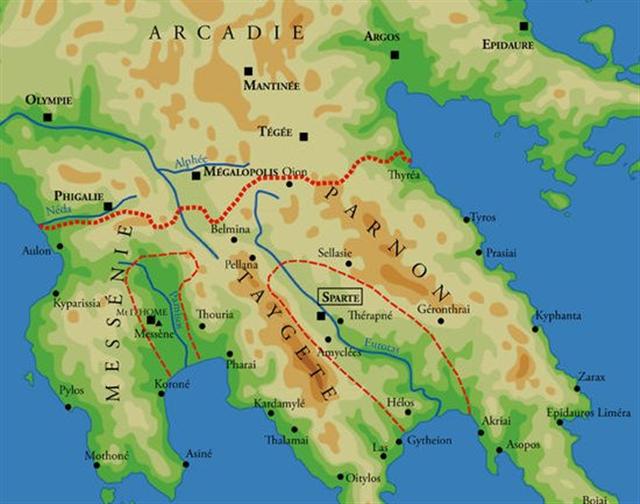
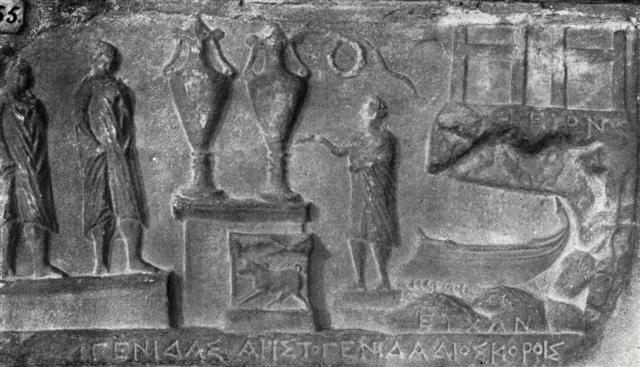

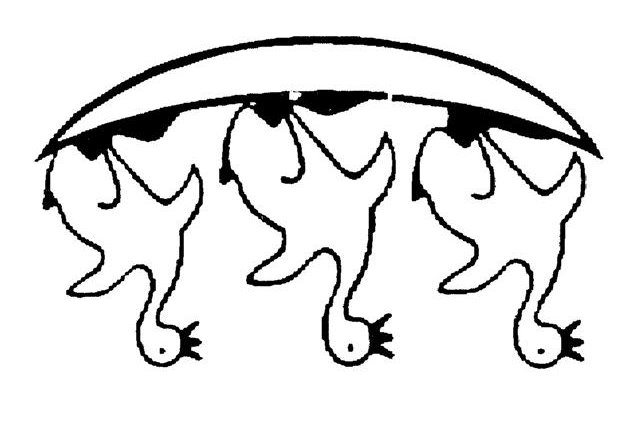


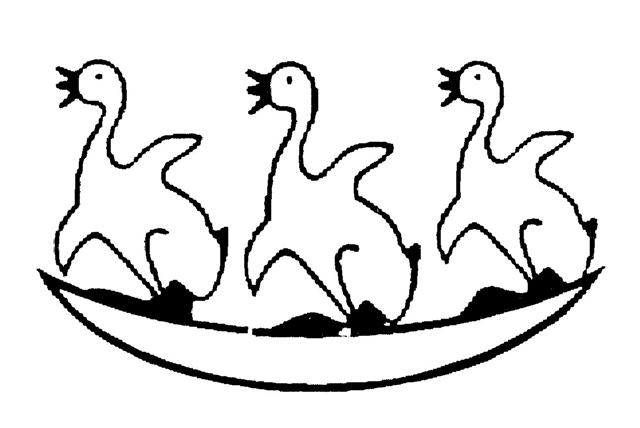


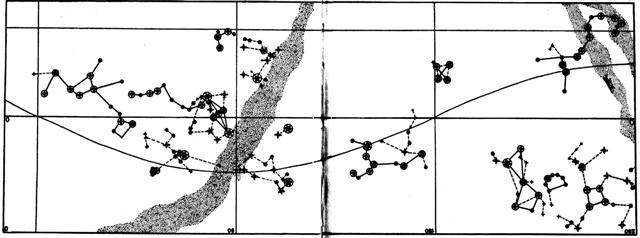
.jpg)
